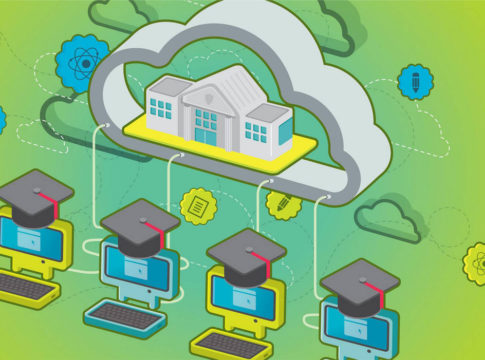My co-executive editors at Education Next, Rick Hess and Michael Petrilli, have already offered important macro-level thoughts on the election and President-elect Trump’s victory (here and here) to which I have little to add. The question that I am to consider is the impact of Trump’s election on innovation in education. Innovation is sorely needed to transform our education system from one that was built to optimize the delivery of instruction to one that ensures that each and every child learns and can fulfill their human potential.

If I’m being honest, I don’t know what the impact will be—for all the reasons Hess and Petrilli outline. Investment in innovation thrives typically amidst certainty. The lack of certainty is a likely negative for the cause of innovation in the pursuit of creating an education system that allows all students to fulfill their potential.
Trump’s consistent plank has been his promise to abolish the Common Core, which the president has no power to do. To the extent his election encourages local politicians to further walk away from the Common Core, it could arguably harm innovation. The reason is that it would continue to fracture a potentially large, common market for which educators and providers can innovate and spend scarce resources focusing on individual student needs, not the needs of individual state standards. Standards in a market typically allow for custom solutions, not standardization—something often confused in education.
At the same time, there are some positive signs for educational innovation in a Trump administration. More educational choice, which Trump has said he favors, would encourage innovation.
Similarly, if Trump were, as Petrilli said, to “rip up some of the regulations the Obama team has drafted to implement the Every Student Succeeds Act (ESSA),” “go back to the drawing board on ‘supplement-not-supplant,’” and “tweak the accountability regulations to better align with the flexibility provided by the law,” these could be net positives for innovation, as they would free up the regulation of educational inputs, which has the effect of locking a system into place.
In higher education, much was made about Trump’s speech in October where he outlined some of his plans. To the extent that, as Hess said, “personnel is policy,” though, we should pay attention to what Trump’s national co-chair and policy advisor Sam Clovis has said. A tenured professor of economics at Morningside College, a small private college in Iowa, Clovis suggested that colleges should share in the risk of student loans, which could encourage all of higher education to focus more on student outcomes, not inputs.
Clovis has also said that the Trump campaign will fight Clinton’s proposals around debt-free public higher education and free community college, both of which would undercut the emergence of more innovative educational programs designed to help students succeed in the workforce.
Hess also observed that there is a good chance we will see a “congressional agenda—championed by the conservative policy-wonk wing of the GOP—competing with the Trump agenda.” If Congress is able to drive the educational agenda, they would do well to dust off Jeb Bush’s plans from his failed bid for presidency. That comprehensive plan, as I wrote, would give educators lots of flexibility “by reducing the number of rules tied to federal dollars in exchange for transparency and choice”—conditions that should promote innovation and the reinvention of an education system built for the industrial age. Specifically, a key component of Bush’s plan proposed to convert 529 college savings accounts into Education Savings Accounts (ESA) so that families can save tax free for their children’s education at all levels—pre-K, K–12, and postsecondary through one’s life. The blockbuster element was that all high school graduates would receive a $50,000 line of credit—roughly the amount currently available for independent undergraduates—through their ESA to pay for a wide-array of their educational programs over their lifetime.
Ultimately, we don’t know what a Trump presidency will mean for education. If a relative lack of activity from the federal government—in stark contrast to the last 16 years—creates an opportunity for local educators closest to students to innovate and better serve them, it could be a net positive. If it creates uncertainty and subsequent paralysis, it would do the opposite. As with all things reality TV, stay tuned.
— Michael Horn
Michael Horn is the co-founder of and a distinguished fellow at the Clayton Christensen Institute for Disruptive Innovation and an executive editor at Education Next.





